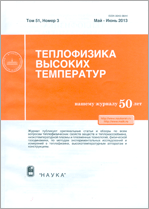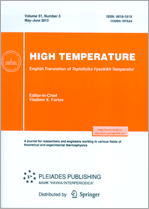|
This article is cited in 13 scientific papers (total in 13 papers)
New Energetics
New Alternative (Partially Homogeneous) Combustion Process as a Method for Reduction of Concentrations of Nitric Oxides and Soot in Combustion Products of Diesel
R. Z. Kavtaradze, S. S. Sergeev
N. E. Bauman Moscow State Technical University
Abstract:
A new alternative (partially homogeneous) combustion process in diesel engines is proposed that
provides changes in local values of the excess air coefficient and the temperature of the working substance in ranges lying beyond the area of the formation of nitric oxides and soot. It is important that the process is realized without significant changes in the serial construction. Modeling of the alternative process and the traditional diesel engine process is carried out on the basis of fundamental equations of three-dimensional non-stationary transfer in combination with models of combustion and formation of harmful substances: nitric oxides and soot. The set of equations for the model of the diesel cylinder with moving boundaries (valves, piston) is used in the Reynolds form and is closed by means of the $k$–$\xi$–$f$ turbulence model considering the near-wall anisotropy of turbulence. The developed $\mathrm{3D}$ models of the diesel engine work process are realized in the CFD code of the AVL-FIRE software complex. It is found that transition from the classic diesel engine process to partially homogeneous combustion makes it possible to block practically completely the formation of nitric oxides and to decrease soot emission substantially.
Received: 28.11.2012
Citation:
R. Z. Kavtaradze, S. S. Sergeev, “New Alternative (Partially Homogeneous) Combustion Process as a Method for Reduction of Concentrations of Nitric Oxides and Soot in Combustion Products of Diesel”, TVT, 52:2 (2014), 294–309; High Temperature, 52:2 (2014), 282–296
Linking options:
https://www.mathnet.ru/eng/tvt190 https://www.mathnet.ru/eng/tvt/v52/i2/p294
|


| Statistics & downloads: |
| Abstract page: | 320 | | Full-text PDF : | 123 | | References: | 64 |
|





 Contact us:
Contact us: Terms of Use
Terms of Use
 Registration to the website
Registration to the website Logotypes
Logotypes








 Citation in format
Citation in format 
